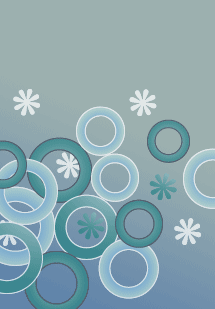Nicotine

What are the Common Effects?
With each puff of a cigarette, a smoker pulls nicotine into his or her lungs where it is absorbed into the blood. In eight seconds, nicotine is in the brain, changing the way the brain works. This process happens so fast because nicotine is shaped like the natural brain chemical acetylcholine. Acetylcholine is one of many chemicals called neurotransmitters that carry messages between brain cells. Neurons have special spaces called receptors, into which specific neurotransmitters can fit, like a key fitting into a lock. Nicotine locks into acetylcholine receptors in different parts of the brain, rapidly causing changes in the body and brain. Nicotine raises the heart rate and respiration (breathing) rate, and causes more glucose, or blood sugar, to be released into the blood. This might be why smokers feel more alert after smoking a cigarette. [4] [6]
Nicotine also attaches to neurons (brain cells) that release a neurotransmitter called dopamine. Nicotine stimulates neurons to release unusually large amounts of dopamine. Dopamine stimulates the brain's pleasure and reward circuit, a group of brain structures called the limbic system involved in appetite, learning, memory, and feelings of pleasure. Normally, pleasurable feelings come from food, comfort, and the company of people you love. But smoking cigarettes causes a flood of dopamine in the smoker's brain. It's this flood of dopamine that gives the smoker intense feelings of pleasure. [6] [7]
Normally, neurons reabsorb neurotransmitters after they've done their job of signaling other brain cells. But cigarette smoke causes dopamine to stay in the spaces between neurons called synapses. Researchers don't yet know exactly what component of tobacco smoke blocks the reabsorption of dopamine into neurons. [7]
In 40 minutes, half the effects of nicotine are gone. So smokers get the urge to light up for another dose of the drug. After repeated doses of nicotine, the brain changes. To adjust to too much dopamine, the brain cuts production of the neurotransmitter and reduces the number of some receptors. Now, the smoker needs nicotine just to create normal levels of dopamine in his or her brain. Without nicotine, the smoker feels irritable and depressed. The smoker has trained the limbic system to crave tobacco. Think about how you long for a cold drink on a hot day. Or how you want a sandwich when you are hungry. Craving for tobacco is much stronger. [6]
These changes in the brain and body make nicotine highly addictive. Other addictive drugs of abuse, including heroin and cocaine, cause the same changes in the brain. [4]
While inhaling a cigarette, smokers are pulling more than nicotine into their lungs. Tobacco smoke contains more than 4,000 chemicals. Besides nicotine, the most dangerous chemicals in cigarette smoke are tar and carbon monoxide. Tar causes lung cancer, emphysema, and bronchial diseases. Carbon monoxide causes heart problems; smokers are at high risk for heart disease. [2] [6]
Smokers also have a dulled sense of smell and taste, reduced stamina for exercise and sports, and they smell of smoke. After smoking for a long time, smokers find that their skin ages faster and their teeth turn brown or discolored. [6]
Tobacco Kills
Each year, nearly half a million Americans die from tobacco use. [6] One of every six deaths in the United States is a result of smoking tobacco, making tobacco more lethal than all other addictive drugs combined. [2]
Nervous or Depressed?
Scientists are learning how tobacco and nicotine affect teen smokers. Studies going on for 25 years show a link between heavy teen smoking and fear of going outside (agoraphobia). Teens who smoke were 6 times more likely to get agoraphobia. And, teen smokers were 15 times more likely to have panic attacks than teens who did not smoke. Scientists think the reason is that nicotine hurts blood vessels to the brain, and also blocks air from the lungs. Whatever the reason, teen smokers are more likely to have panic attacks, anxiety disorders, and depression. [8]
References
[Back to top]
Search.
Enter your keywords and click the button to submit the search.Need Treatment
Glossary
Exercise your brain
Free Downloads
Answer This
Mind Over Matter


